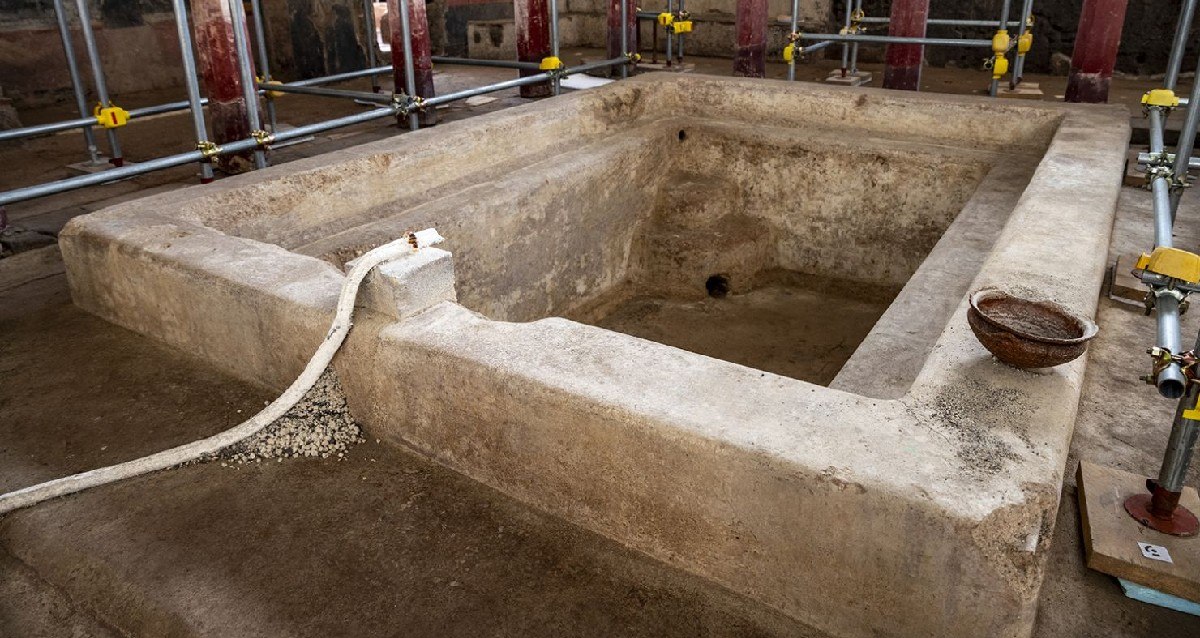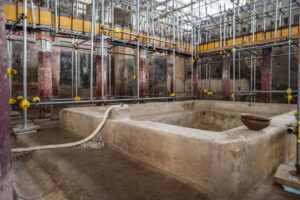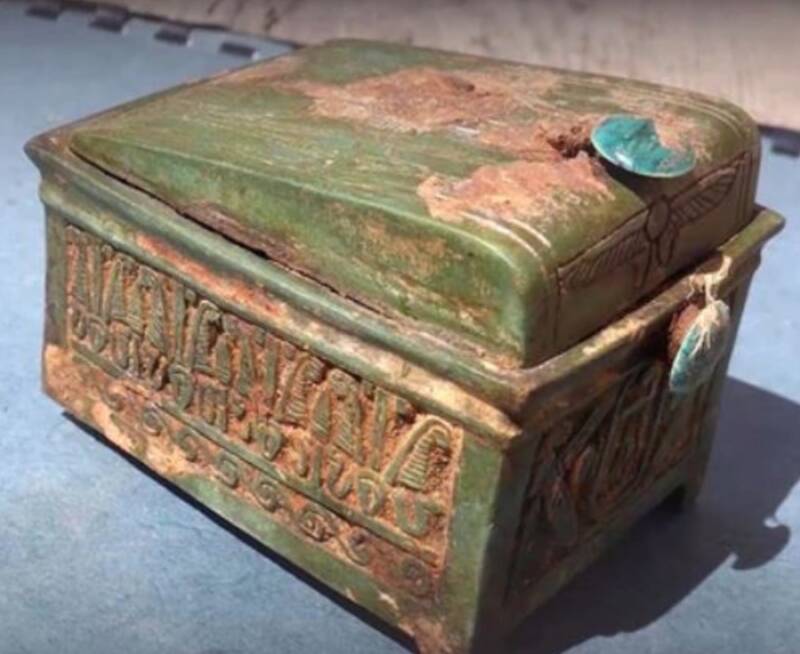“Unearthed Treasures: A Stunning Thermal Spa in Pompeii Reveals Secrets of Ancient Indulgence for 30!”
Imagine stepping back in time to the bustling streets of Pompeii, just before that fateful day in 79 C.E. Picture this: a luxurious villa with a private bath complex that would make even the poshest modern spa blush! Yes, you heard that right. Recently unearthed, this magnificent thermal bath complex, complete with hot, warm, and cold baths, offers a tantalizing glimpse into the lavish lifestyle of Pompeii’s elite. It’s like an ancient version of “MTV Cribs,” where the rich and powerful hosted extravagant parties, flaunting their wealth and good taste to their impressed guests. What did they chat about while soaking? Probably the latest gossip about who was the hottest gladiator in town! Dive in as we explore this incredible archaeological find that reveals so much about a society frozen in time by the eruption of Mount Vesuvius. Are you curious to learn more about Pompeii’s bathhouse drama? LEARN MORE.
The private bath complex would have been used to impress guests, and it likely belonged to one of the leading figures in Pompeii society.
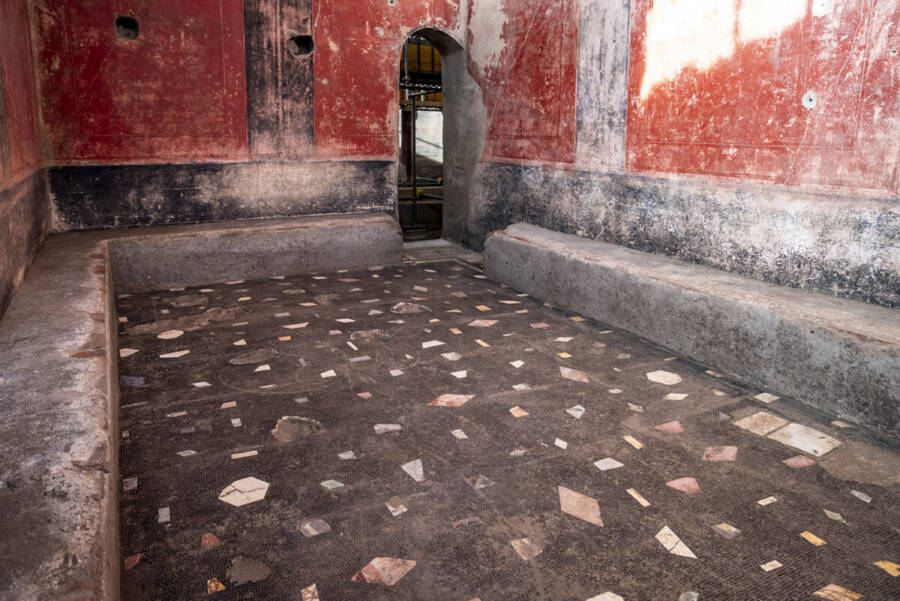
Pompeii Archeological Park Press OfficeThe complex includes hot, warm, and cold baths.
When Mount Vesuvius erupted in 79 C.E., it buried the rich and poor of Pompeii alike in an avalanche of ash. But the eruption also preserved how some of the city’s wealthier citizens lived, as demonstrated by the discovery of a sprawling thermal bath complex in a Pompeii villa.
The spa is one of the largest ever found in Pompeii and offers a tantalizing look at how the rich citizens of the doomed city hosted parties.
Discovering The Bath Complex In Pompeii
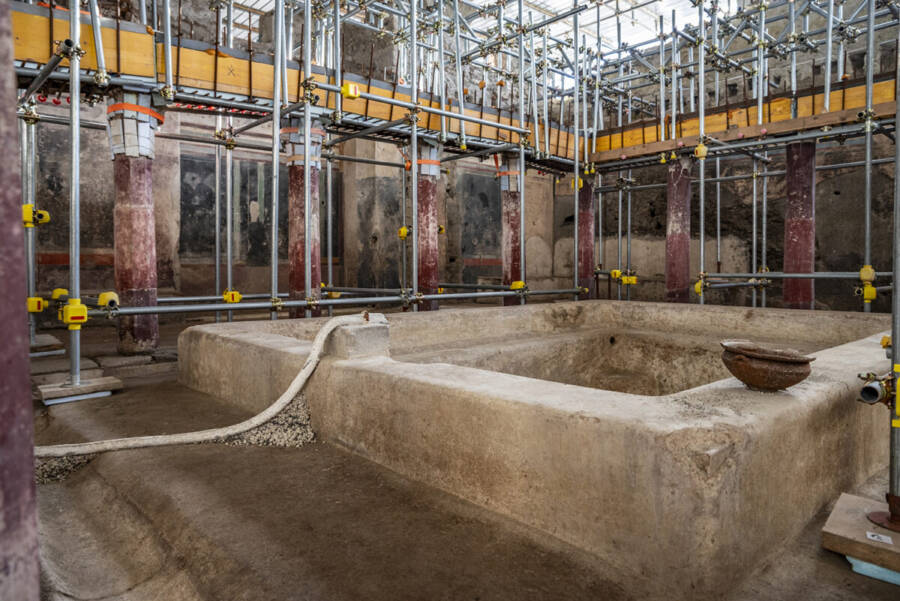
Pompeii Archeological Park Press OfficeA pool located within the bath complex.
According to a press release from the Pompeii Archaeological Park Press Office, the thermal bath complex was uncovered during excavations of a private home in the city. The baths connect to a large dining room adorned with Trojan War frescoes, which was unveiled last year.
One of the largest and most well-structured private spa complexes ever uncovered in Pompeii, the baths consist of a calidarium, tepidarium, and frigidarium (that is, hot, warm, and cold baths) as well as an apodyterium (changing room). As many as 30 people could enjoy the baths at once. According to the press release, the frigidarium is “particularly striking.” It includes a porticoed, or peristyle, courtyard surrounding a large pool.
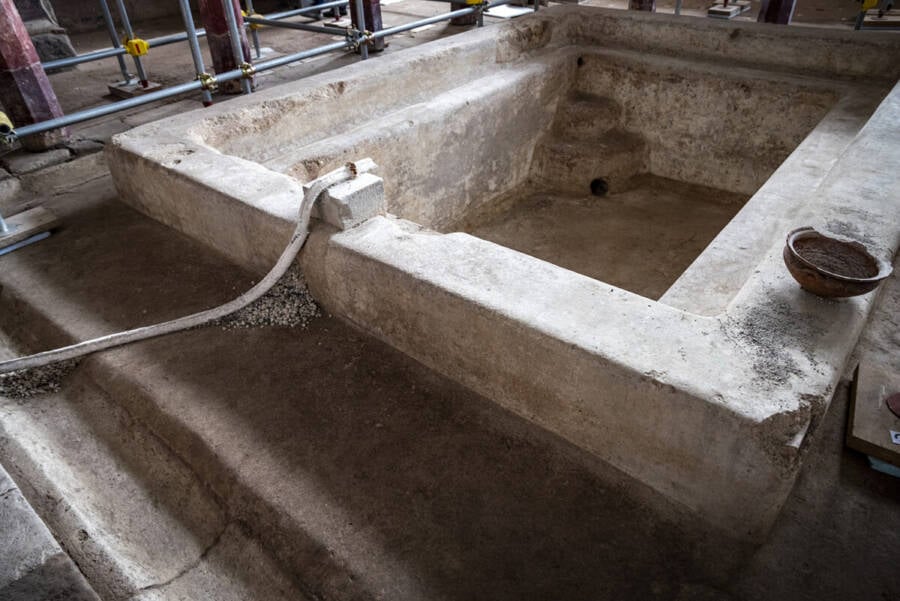
Pompeii Archeological Park Press OfficeLooking down into the pool in the frigidarium.
As archaeologists explained, the bath complex was almost certainly used by one of Pompeii’s leading citizens to host memorable parties.
How The Pompeii Bath Complex Was Used
Some 2,000 years ago, the Pompeii villa where the bath complex was found was likely owned by one of the city’s most prominent citizens. Based on first-century sources, archaeologists believe that the host and his guests probably bathed together before settling down for dinner.
“Everything was designed to stage a ‘show,’ in which the owner was the center of attention,” Gabriel Zuchtriegel, the director of the Archaeological Park of Pompeii, explained in the press release. “The Third Style paintings with themes from the Trojan War and scenes depicting athletes in the peristyle must have lent these spaces a Greek atmosphere — in other words an environment full of culture and erudition as well as relaxation…. the peristyle with the large pool in the center and the adjoining thermal bath complex created a setting worthy of a Greek gymnasium which was further accentuated by the athletic scenes added later on.”
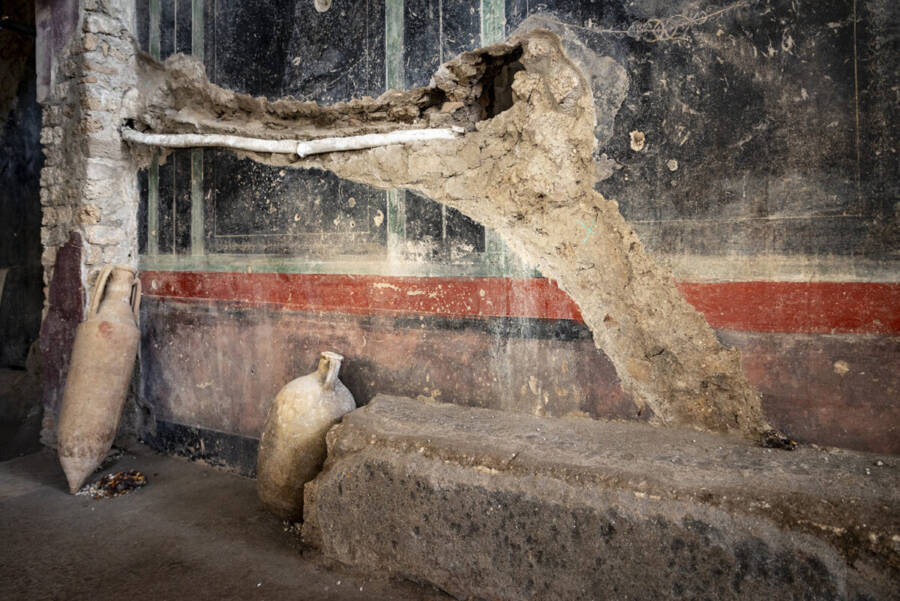
Pompeii Archeological Park Press OfficeThe bath complex was built to entertain — and awe — the host’s guests.
“The grateful, hungry public would have applauded the show put on by the owner of the house with sincere admiration,” continued Zuchtriegel, “and it would have become a conversation topic long after the evening spent in his ‘gymnasium.’”
As such, the bath complex captures what life was like for a slice of Pompeii’s citizens. The host and his wealthy guests very likely used the baths to relax, gossip, and enjoy an evening of food and drink. Not all people in Pompeii had access to such luxury. Other discoveries near the home — like a prison bakery where enslaved workers once toiled — show how diverse Pompeii’s citizens were.
Rich or poor, many of them died when Mount Vesuvius erupted in 79 C.E., burying the city in ash and effectively freezing it in time. The infamous eruption captured many facets of Pompeii life, from opulent villas to workshops and restaurants, creating an incredible historical mosaic of diverse lives that we’re still uncovering to this day.
After reading about the luxurious bath complex discovered at a Pompeii villa, look through these gut-wrenching photos of Pompeii bodies frozen in time. Or, discover the surprisingly raunchy story of ancient Pompeii graffiti.
